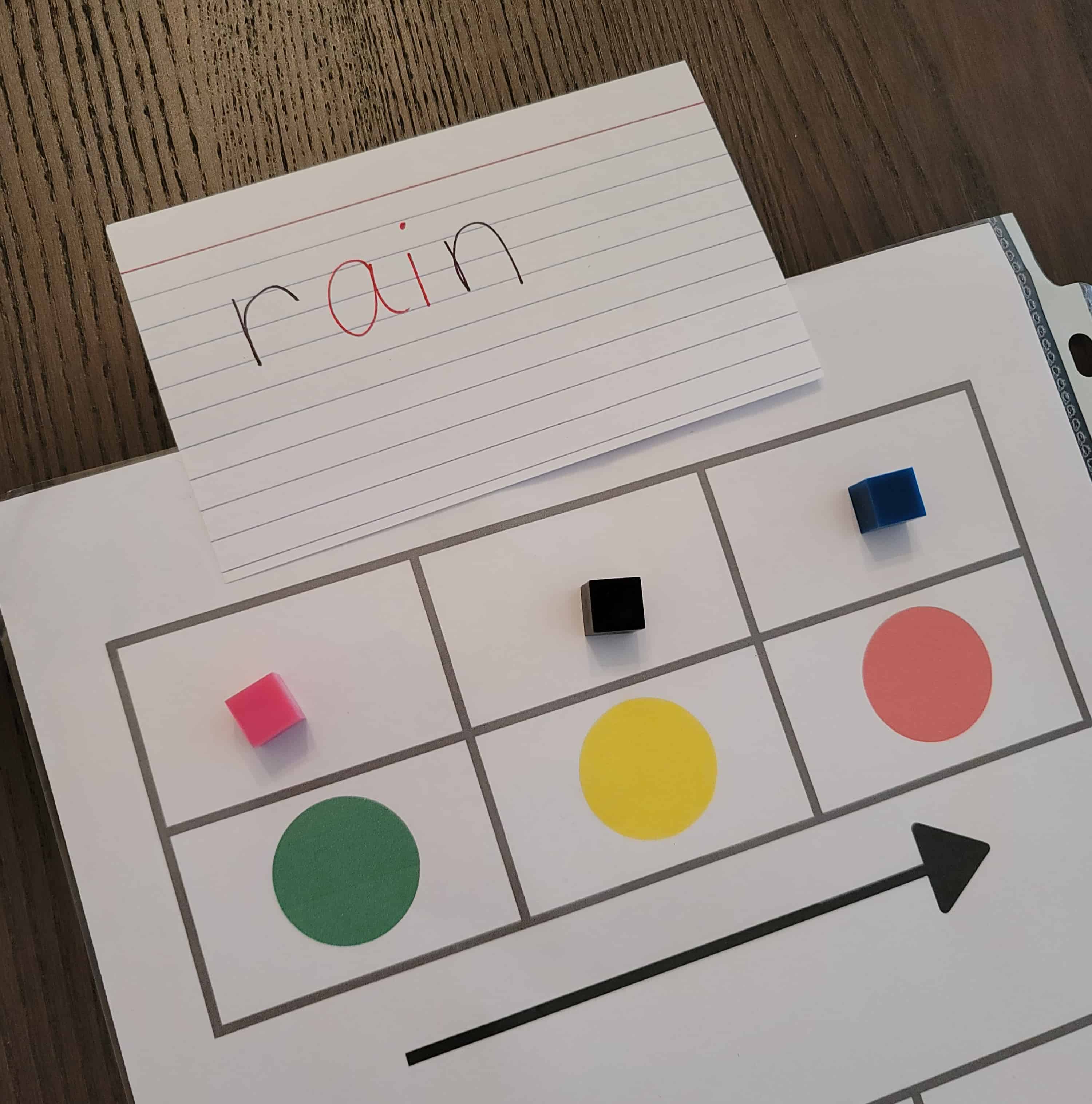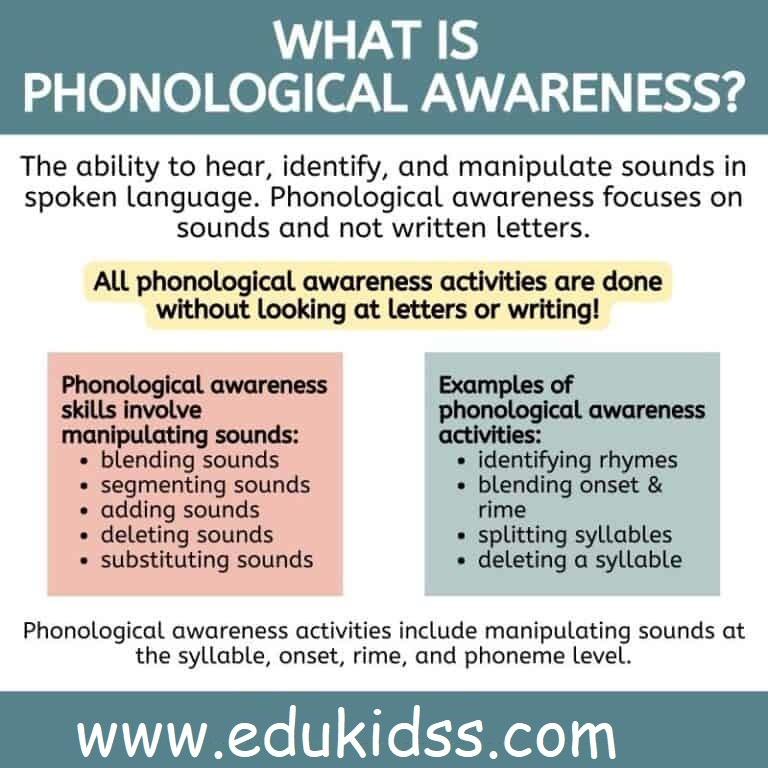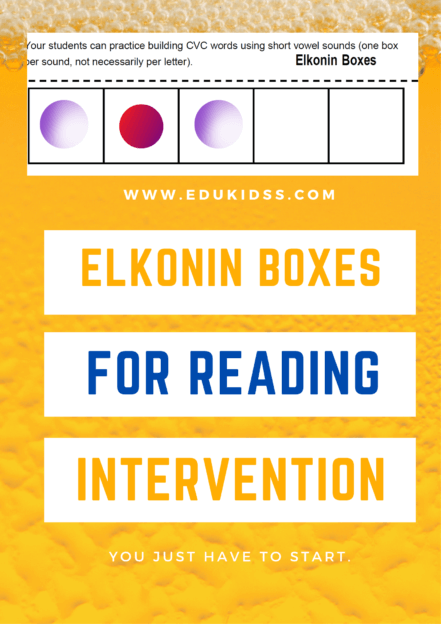After years of working with dyslexic kids, I have several reading strategies for struggling readers that I always turn to because of their success. The best strategies are all multi-sensory because those are the most effective for all struggling readers, especially those with dyslexia.
Elkonin boxes are an effective multisensory strategy that builds and strengthens phonological awareness. It’s my favorite reading strategy to help struggling readers with segmenting and blending, one of the best dyslexia interventions for phonics and decoding that all students can use.
What are Elkonin boxes?
Elkonin boxes are sound boxes that are used to segment words into individual sounds.
Each box represents one sound, and as students go from one box to the next, they place something in the box to represent that sound in the word.
There is actually a bit of research that supports the use of Elkonin boxes:
- Blachman, B. A., Ball, E. W., Black, R., & Tangel, D. M. (2000). Road to the code: A phonological awareness program for young children. Baltimore: Brookes.
- Clay, M. (1993). Reading Recovery: A Guidebook for Teachers in Training. NH: Heinemann.
- Elkonin, D. (1971). “Development of Speech”. In A.V. Zaporozhets and D. B. Elkonin (Eds.). The Psychology of Preschool Children. Cambridge, MA: M.I.T. Press.
- Ellis, E. (1997). How Now Brown Cow: Phoneme Awareness Activities.
National Institute of Child Health and Human Development. (2000). Report of the National Reading Panel. Teaching children to read: An evidence-based assessment of the scientific research literature on reading and its implications for reading instruction (NIH Publication No. 00-4769). Washington, DC: U.S. Government Printing Office.
Reading Intervention with Elkonin Boxes
Blending and segmenting words are two skills many of my students struggle with. Often, they can sound out each letter but are unable to blend the sounds together to say the word or they struggle to break words up into phonemes.
Elkonin boxes provide a great visual scaffold for students to blend without pausing between the letters and break words up into phonemes. It builds phonological and phonemic awareness and helps students visualize phonemes.
Students are required to break up the word into sounds instead of focusing on letters. This helps them see that many sounds are made of more than one letter.
Then they can blend these broken up sounds to form a word and work on blending skills.
I have found this strategy to be the most effective with my students and am able to remove the visual and they can still apply the strategy on their own.
I created my own Elkonin box printable template with color aids and a blending arrow to help students blend the sounds. The colors are especially helpful for students who struggle with tracking and make inversion and omission mistakes when reading and writing.
I use this template with phonogram cards, letter tiles, or write phonograms directly on it. I put the page in a sheet protector and use the ultra fine dry-erase markers on them.
Manipulating Sounds
Manipulating sounds is part of both phonological awareness and phonemic awareness. Specifically, this means:
- Blending sounds
- Segmenting sounds
- Adding sounds
- Deleting sounds
- Substituting sounds

Examples of phonological awareness activities
Note that when a letter is between slashes (i.e. /b/), it refers to the sound and not the letter name.
Here are a few examples of phonological awareness activities:
- Counting words in a sentence: How many words do you hear in “The cat is sleeping?” – 4 words
- Rhyming: Find a word that rhymes with tab – cab, lab, dab, gab, etc.
- Match the same beginning sound: Say a word and ask students what other words begin with the same sound (emphasis on sound, not letter!)
- Blend the onset and rime: Say the onset and rime of a word and ask students to put them together /b/ /at/ – bat
- Divide the onset and rime: Say a word and ask students to divide it into 2 parts. Say dip – d – ip
- Delete the final syllable from a compound word: Say cupcake. Now say cupcake but don’t say cake – cup
- Substitute the onset from a word: Say bat, but instead of /b/ say /f/ – fat
Notice how none of these activities require writing or looking at letters. It’s all sound based and oral. Students simply listen and respond.
What Is Phonemic Awareness?
Phonemic awareness is part of phonological awareness.
Phonemic awareness refers to the understanding that spoken words are made up of individual sounds (phonemes), and the ability to hear and manipulate those sounds.
There are 44 phonemes in the English language, meaning 44 different sounds. Even though we have 28 letters, these letters on their own and along with others make the 44 sounds.
These 44 phonemes are represented by graphemes, or letters that represent one sound.
Examples of phonemes include:
- Consonant sounds
- Consonant digraphs like /th/ and /ch/
- Vowel sounds

Phonemic awareness skills include:
- segmenting sounds in a word
- blending individual sounds together
- deleting individual sounds
- substituting individual sounds

Examples of phonemic awareness activities
Below are a few examples of phonemic awareness activities. Like phonological awareness, phonemic awareness skills also only deal with sounds and there is no writing or looking at letters.
- Segment 3 phonemes: Say a word with 3 sounds. Ask students to separate the sounds and hold up a finger for each sound as you say it.
- Blend 4 phonemes: Say a word with 4 sounds, sound by sound very slowly. Ask students to say the word back aloud.
- Delete the final sound in a word: Say send. Now say send but don’t say /d/ – sen
- Substitute the medial vowel in a word: Say net. Now say net but instead of /e/ say /o/ – not
Phonological Awareness vs Phonemic Awareness – What’s the difference?
If you didn’t notice, the difference between phonological awareness activities and phonemic awareness activities is that with phonemic awareness you’re only working with sounds at the phoneme level.
Let’s use blending sounds as an example. A phonological awareness activity would be blending 2 syllables together (sim/ple = simple). A phonemic awareness activity would be blending 3 phonemes together (/g/ /a/ /p/ = gap). This is also a phonological awareness activity because it’s working with sounds.
One thing they have in common is that both phonological awareness and phonemic awareness focus on sounds we hear and not the letters we see. Both are listening and speaking activities that don’t require looking at any letters. All of these activities can be done with your eyes closed.
Phonics
Phonics is where phonological awareness and phonemic awareness come together with writing and looking at letters. Phonics is specifically matching phonemes (sounds) to graphemes (letters that represent a sound).
Phonics focuses on matching letters and graphemes to specific sounds and is done using written letters.

What’s the difference between phonics and phonemic awareness?
Phonics activities look like phonological awareness and phonemic awareness activities but they are done looking at the letters while performing the task.
For example, when blending, students are looking at a word, letter cards, or using magnetic letters. For segmenting, students are separating magnetic letters or flashcards, or writing letters in Elkonin boxes.
Why is phonological awareness important for reading success?
Now you can see that students must already be familiar with phonological awareness skills to be successful readers, well before they start working on phonics. Phonics is where we learn to read and having strong phonological awareness is key.
That’s why phonological awareness is such an important area to start working on with young students. If a student already knows how to blend from doing phonological awareness activities, when they come across a new word, they can use those same skills to decode and blend the word to read it. This is phonics.
In fact, phonological awareness is one of the strongest predictors of reading success. Research shows that children who have difficulty identifying the phoneme in a word struggle to decode words. Students need to be able to hear, segment and blend sounds to learn how to read using phonics.
Bottom line: phonological awareness and phonemic awareness skills increase a child’s ability to read new words accurately.


1 Comment
The information was very useful! I know more now about how a brain learns to read and I plan to implement it into my teaching methods, thank you.